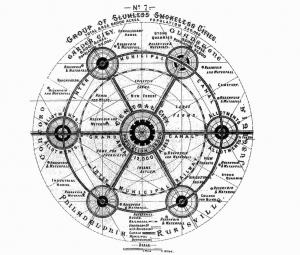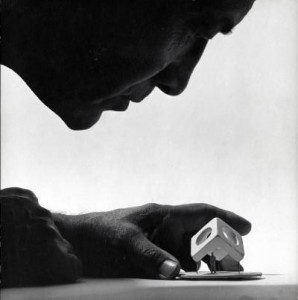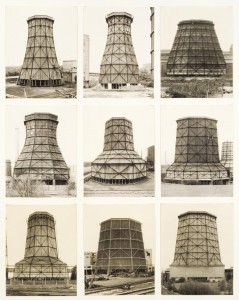D’Arcy Wentworth Thompson – On growth and Form and Water cube
Digital Logics / T4
Garden Cities of To-morrow / Sir Ebenezer Howard
A pedestrian and inclusive city has to do with an approach that is given prevalence humans and pedestrian traffic insurance from an integrated public and private spaces, to provide vitality to the urban space as a whole configuration and lead to harmonious coexistence, not segregation of traffic flows and different modes of transport. This, by the provision of public spaces continuous pedestrian level without physical and / or architectural barriers, where the distances required for travel on foot or by bike are short in consideration of the prevalence to be given to these modes transport, and which are directly related to the first floors of buildings generating a direct interaction between public and private, giving as a result secure and dynamic environments. The proposed architecture level existing public space must be permeable visually and physically through the arrangement of windows and access to private spaces, allowing an appropriate relationship between public and private spaces, forming vital and safe urban environments.
Apparently this relationship user – building was designed in the Sendai Mediatheque, and generated public private relationship of that first floor inviting users to access and have a set of atypical programs in each of its floors, connected by a structure program which fulfills two functions.
Many projects can fail by not having this connection between the building and the user first floor, as it is this that gives wealth in this public space is connected with different parts of the city, and not turn it into an isolated entity.
Whereupon regard to reading, it would be interesting to analyze this behavior exists and describes the author discusses certain patterns that Christopher Alexander in his book “Pattern Language” whether pedestrian street realm of circulation, pedestrian pathways, among others, and try to establish a logical user behavior and different types of buildings in their first floors.
Digital Locigs_ T6_Parametricism
( Image Ref :http://www.timeout.com/newyork/attractions/civic-action-a-vision-for-long-island-city ) Read More
On Growth and Form- D’Arcy Wentworth Thompson
On Growth and Form, D’Arcy Wentworth Thompson
In this text Thompson combines Biology, science and Math ideas together, in order to present his theory of transformation in nature. Thompson writes about the morphogenesis, the process by which patterns are formed in plants, animals and human beings. His goal is “To study inter-relations of growth and form, and the part which the Physical forces play in this complex interaction”[1]
DIGITAL LOGICS – “On Growth and Form”
“On Growth and Form” by D’Arcy Wentworth Thomson
In Thomson’s book “On Growth and Form”, he looks at the way natural living things, such as vegetation and animals, and why they take the form they do by growing and changing. While at first the forms are described with words, they later are represented with mathematical and graphical drawings. Thomson admits that the mathematical analysis has its limitations since one cannot simply draw anything. However, it does have an advantage in a way we can manipulate shapes and discover new things; he places a grid and then deforms it consistently in one particular pattern, the result is a new species. Nevertheless not everything can be transformed to anything; a vertebral animal cannot be transformed to a mammal. His study of form is called “morphology”. The form goes from a static to dynamic state with the influence of forces on them. While looking at the shape we can recognize the force that transformed it, which can be for example Gravity. By understanding the form transformation vs. the forces, we can see a similarity with DeLanda in the evolution process from young to older. Thomson discuses the concept of average since the process of transformation allows you to get only an approximate result; one can get mathematical forms for shapes in general, but not for a specific case – “Keep the type in mind & leave the single cases, with all its accidents, alone”. In “On Growth and Form”, there is also the idea of Newton which says that “Nature delights in transformation”. The book is mostly about questioning and comparing the form, growth and Cartesian coordinates. According to Thomson, comparison of related forms allows us to understand better the transformation and deformation that if we saw the form alone. His method was to use Cartesian coordinates, and it can be used to study missing parts of an animal or the missing steps of the evolution process. Thomson describes Listing’s point of view of seeing a topological similarity in mammals where in the science of typology any form can be changed to any form. This concept comes behind the fact that if you breakdown different forms, we will end up with similar basic geometric shapes. However Thomson did not study this perspective. All of his experiments are limited since they are in 2D, where everything in the grid changes but keeps the same relation. His study can be applied on a 3D grid but there will be difficulty in correlating one plane into different one. Moreover, even in his 2D process, we can notice that his transformation from the initial drawing to the obtained result is not always very accurate and sometimes raises doubts about certain coordinate’s displacement; Nevertheless we should keep in mind the book was written in a time where computer analysis and parametric still did not exist, making his work an impressing read. We can notice that Thomson applied the same method as Albert Durer did on human face, but for animals.
In my personal research, I would like to experiment and apply Thomson’s theories since he was descriptive rather than experimental in his book. It is clear that he was aware of that when he said: “This book of mine has little need of preface, for indeed it is ‘all preface’ from beginning to end”. It would be to apply the study to all shapes in our daily life to follow their process and see what forces and changes they have been affected by to become transformed to what they are.





